Written By
OKLR Members
Published
01/04/2025
April 2025 Newsletter
Volunteers Needed
The railway is always looking for new volunteers to help with the maintenance and operation of the railway. If you are interested in getting involved, check out the volunteering page on our website.
We would be happy to open our doors to anyone who would be interested in helping out, whether you have experience in the railway industry or not. We have a wide range of roles available, from driving the trains to maintaining the track and buildings.
A message from Tim, a new volunteer.
I have recently started volunteering at the Old Kiln Light Railway as was looking to get more practically involved with the hobby so here are some reports on my experiences thus far. It’s been a great learning journey and everyone have met has been very kind and helpful.
On our first visit the railway had just welcomed a new arrival the previous evening, so I was able to spend some time cleaning it along with my son which we both enjoyed. The arrival in question is a very interesting one being a Simplex type loco MR7902 which had been kindly donated by the LEGOLAND theme park.
Our task was to clean the loco to remove the many years of grime and make the loco presentable. I was intrigued to see earlier paint layers coming through, particularly the Alan Keef orange with associated lettering as well as earlier schemes. Since it’s arrival some more work on Amey has taken place to breath life back into it but it will be sometime before a full restoration takes place.
For my next visit the aim was to carry on work at Mills Wood as part of the ongoing project with the run round loop trackwork. Some concreting was in order for a base for a new ground frame so the first task was to round up the required materials. This meant a little ride down the line for me on Hunslet 4wd HE7013 WeyFarer to collect wagons from the other end of the line at Reeds Road and bring to the top. All very good experience learning how points worked and shunting manoeuvres are carried out. The concrete base was prepared and smoothed and we all had a lovely bacon and egg lunch courtesy of one of the members with an air fryer which was consumed sitting on the platform in the sunshine. After this I helped clean the detritus of the PW department from the platform and gave it a good sweep ready for use the next weekend. It was a real pleasure to be working and learning new things and all in wonderful weather!
For something different an engine cleaning day for me and my son for our next visit. Our main focus was on the very historic 1929 built Baguley 0-4-0 1769 Altonia. In deference to it’s age Altonia is only rarely used but hopefully after our efforts when it does will be looking smart. Another lovely day at the OKLR and we went home of course with clothes reeking of cleaner and oil! I have very much enjoyed my volunteering days so far at the OKLR and would recommend the experience to anyone!
Mills Wood Update
Almost immediately after the Santa Specials work began on the loop. This has seen some of the woodyard branch dismantled in order for us to dig up the 15B points and move them to their new position.
Some of the old woodyard branch rails are being re-used to form a new headshunt siding running parallel to the mainline which will be used on busy days to stable locomotives or demonstration freight trains.
After this, we moved the original loop at the top of the station to its new position and re-connected it to the 15B points. The original loop rails are now in the process of being straightened and the spots were re-sleepered for reuse on the loop line.
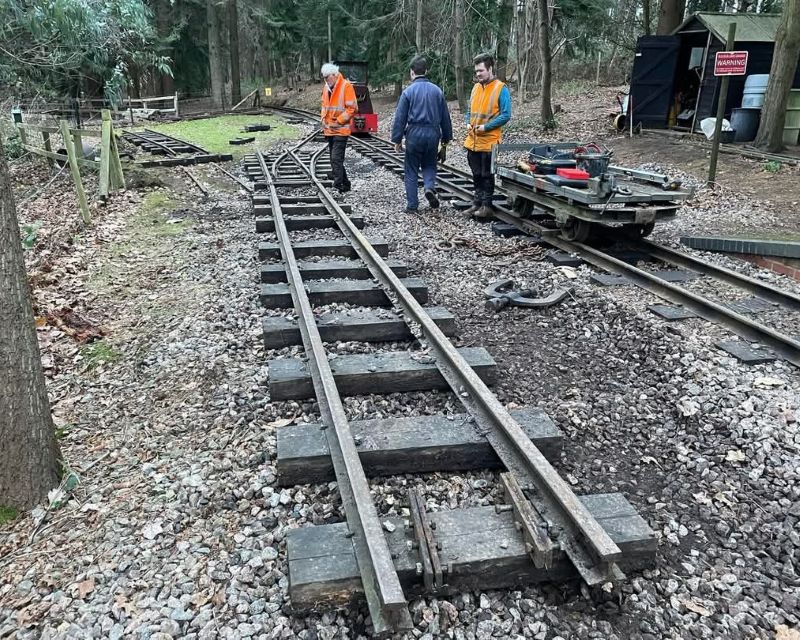
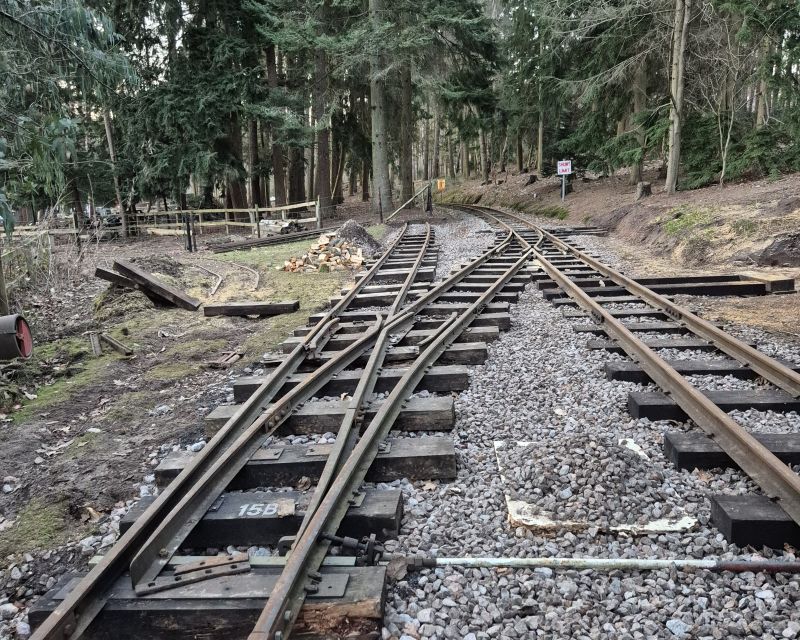
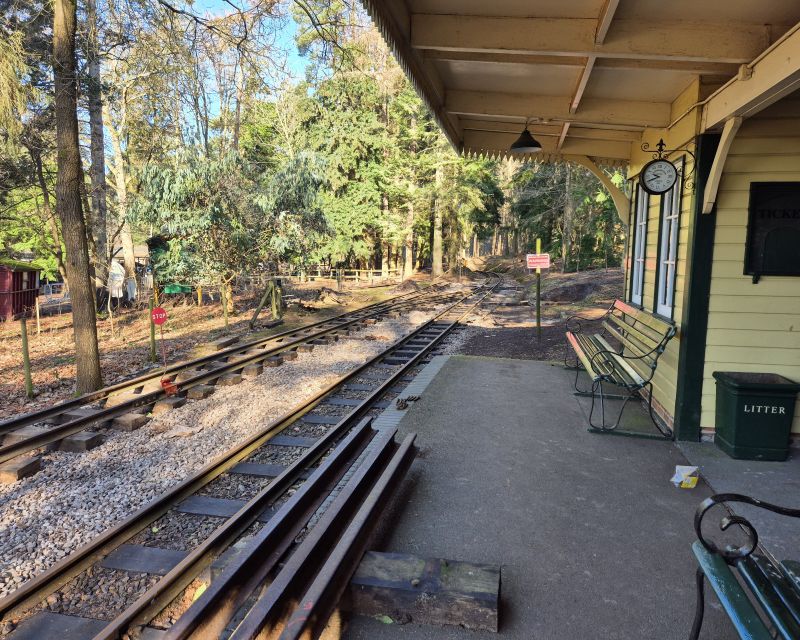
Furthermore, we moved the loco release point (no.16) down 9ft. This would allow our diesel locomotives to run around the train without the need to block off the level-crossing, and in turn will make it safer for passengers to cross. This adjustment is made using an amalgamation of the original blades and stock rails, with a new crossing V and wing rails from our stores.
The original 16 points crossing V will be used on the new 17A points which will connect our run around loop onto the new woodland tramway when we get to that part of the project later in the year.
To help improve customer safety, we also aim to install new gates in the area which will better guide passengers to the ticket office and away from the track.
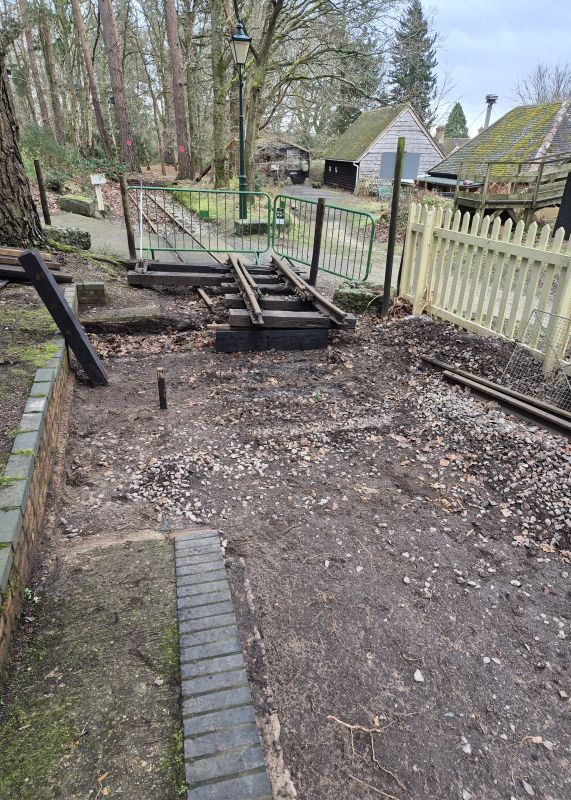
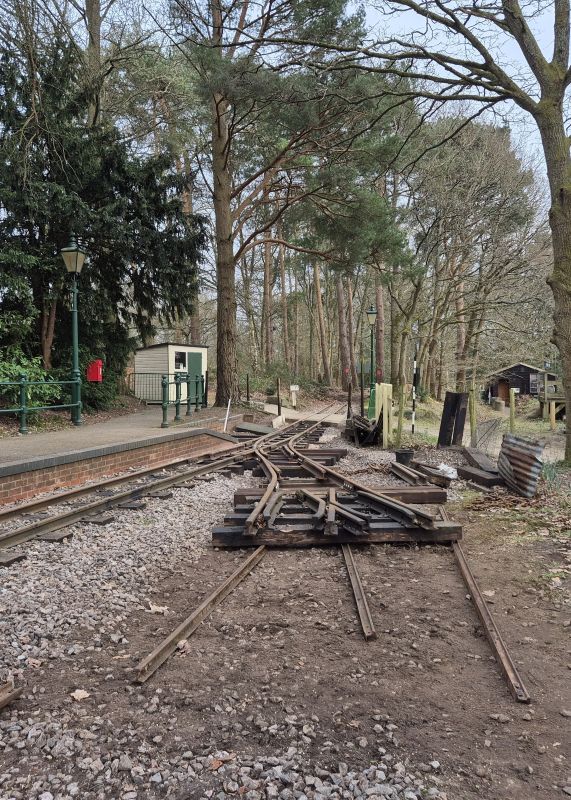
The ground frame and associated rodding has been taken away to be repainted. With the large-scale of the works, we felt it was necessary to move the position of the frame to allow for further development of the Mills Wood station area, which also had an added bonus of placing it in a safer position away from the main running line.
Further works will include the construction of a 17A point, installing it and reconnecting the loop line. We are hopeful that the loop will reach completion in-time for Village at War at the start of May.
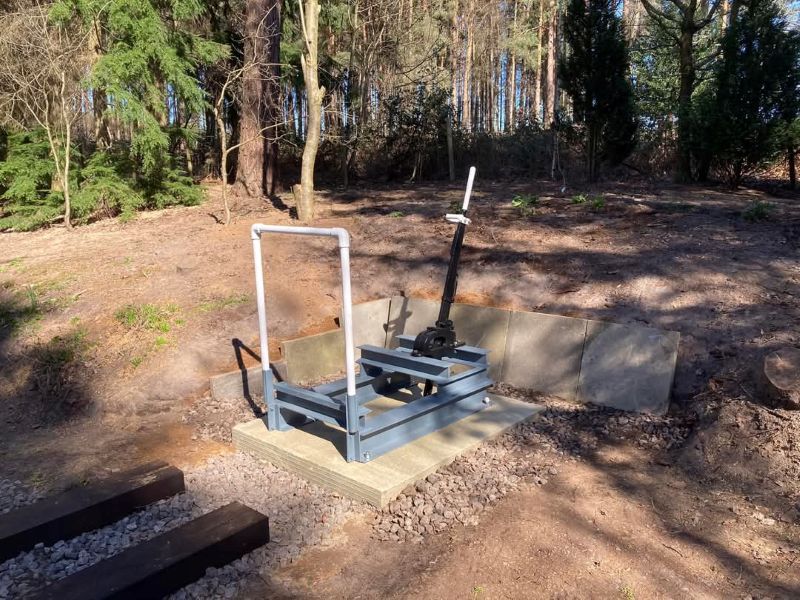
9655 'Bluey'
At the end of the last update MR.9655 Bluey’s Gearbox was just going back together. Since then, the gearbox rebuild has been completed and the gearbox has been refitted to the chassis of Bluey. The gearbox has all new bearings, selector forks and selector shafts, and all new seals.
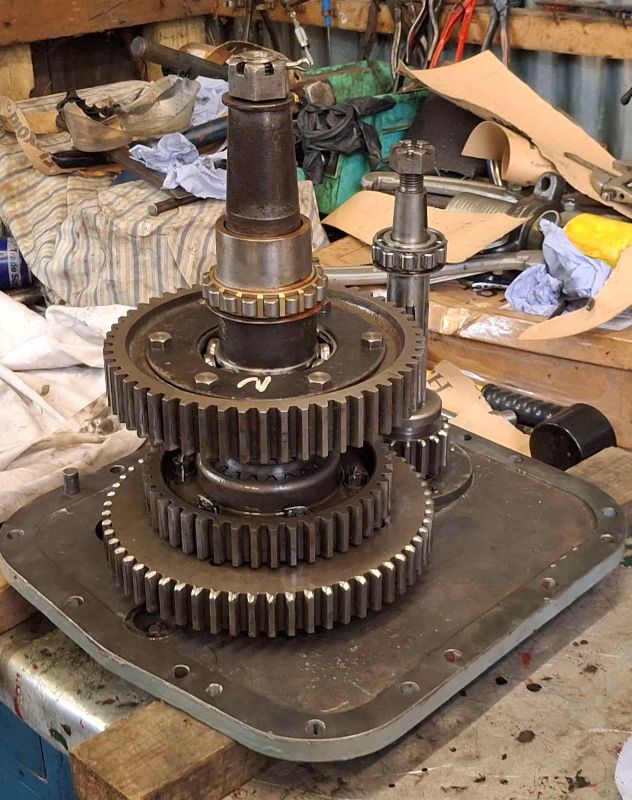
A new gearbox output sprocket of the correct type for the later chains has been fitted and the drive chains have been refitted between the gearbox and wheelsets.
Cab
In early January 2025 a 20/28 Motor Rail cab was acquired from the Apedale Valley Light Railway. The cab is of the Arnolds type usually seen on locomotives that ran at the various sand pits around Leighton Buzzard. The cab in question is originally from Arnolds No. 24. This is not the first time Arnolds parts have been fitted to Bluey, as during its previous rebuild Bluey gained several parts from Arnolds No. 23 (MR.7128), including the weights and handrails amongst several other parts. Bluey originally had a cab, however this was lost in industry when the locomotive was rebuilt at Escrick Tile Works in 1974 with the bodywork from a lorry that had been written off the year previously at the tile works. Its been a long term goal since acquiring Bluey to reinstate a cab of some sort.
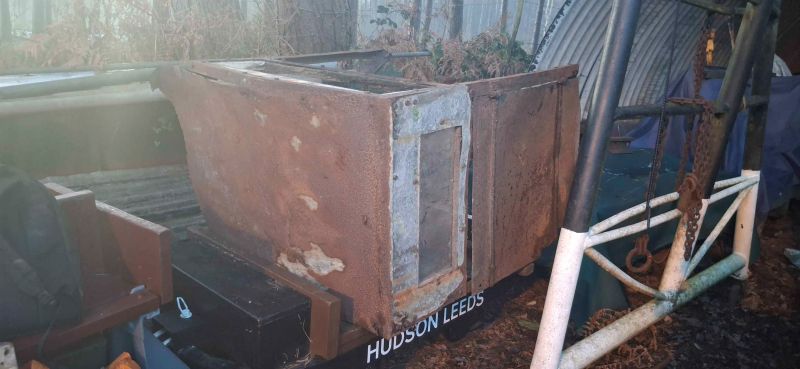
Since arrival at the OKLR the cab has been stripped down to its component form, awaiting repairs to the framework in places where required. The only reusable piece of sheet metal from the cab is the cab door. The rest of the sheetwork is beyond reuse, but may still be usable as a pattern. New wooden window frames will also need constructing.
Engine and Clutch
The teardown of Bluey’s engine and clutch has continued.
Bluey’s engine has never been too happy since it was first moved to the OKLR in 2022. During its first test run it produced a huge amount of smoke unlike anything else we’d ever seen. It was leaking oil quite badly and there was a slight knocking noise, which was initially hoped to just be diesel knock.
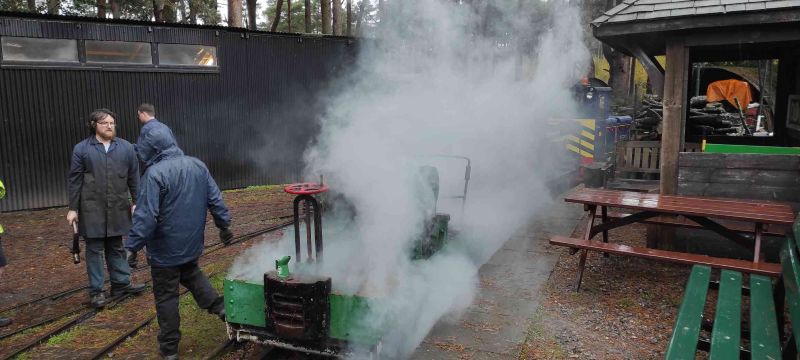
In Spring 2024 Bluey was in a state where it could be tested under its own power, this test run revealed even more problems, mainly the engine mounts being loose, and the throttle getting stuck. The test run revealed issues with the clutch too. The top half of Bluey’s engine was disassembled in Spring 2024 shortly after the test run, which revealed some of the causes behind problems already known about. It was also discovered that the cam followers had cracked and shattered, the injection timing disc was missing half the securing nuts and was quite badly mangled and the injector fuel returns hadn’t been done up, leaking a large amount of diesel into the engine’s oil. There was also quite a large amount of bathroom sealant holding the engine together, including where studs had been broken and the broken studs shoved back in with bathroom sealant to secure them.
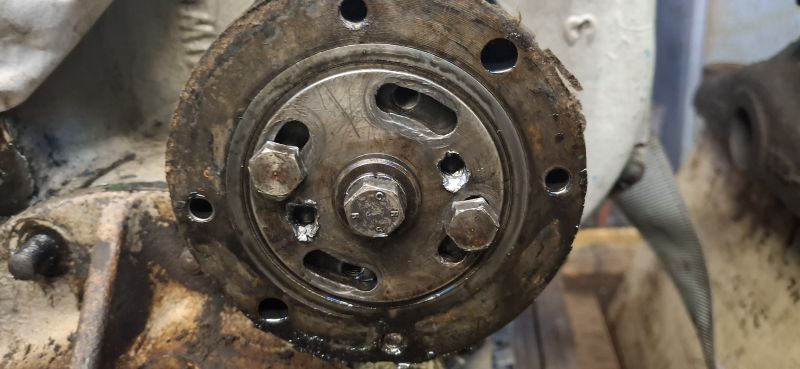
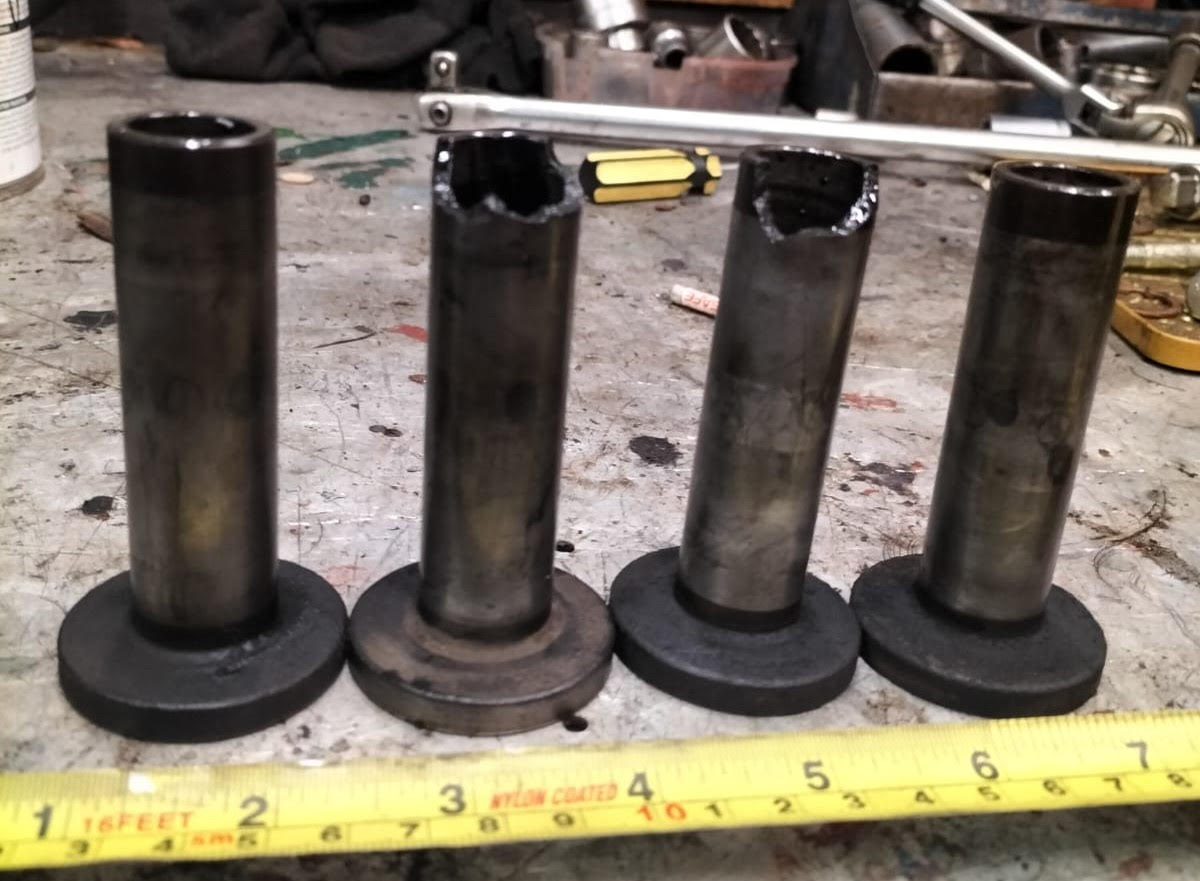
Accessing the cam followers required the complete disassembly of the engine all the way down to the crank, something which at the time wasn’t achievable due to workshop space constraints. It is only now, almost a year later, that work has been able to resume full force on the engine.
The clutch teardown has revealed that when it was last rebuilt several important parts were not put back in, and several other parts were not done up correctly and have come loose in service. The pilot bearing was missing the inner race, and the spacer piece that sat behind the pilot bearing was also missing. No split pin was fitted to the castle nut at the end of the clutch shaft, allowing it to unwind in service. The clutch guides were loose and had allowed several millimetres of horizontal play to the pressure plate and friction disc. The clutch plate has sustained damage where its been rubbing against internal parts which were not done up correctly. The release bearing had no grease nipple fitted, and had destroyed itself due to no lubrication.
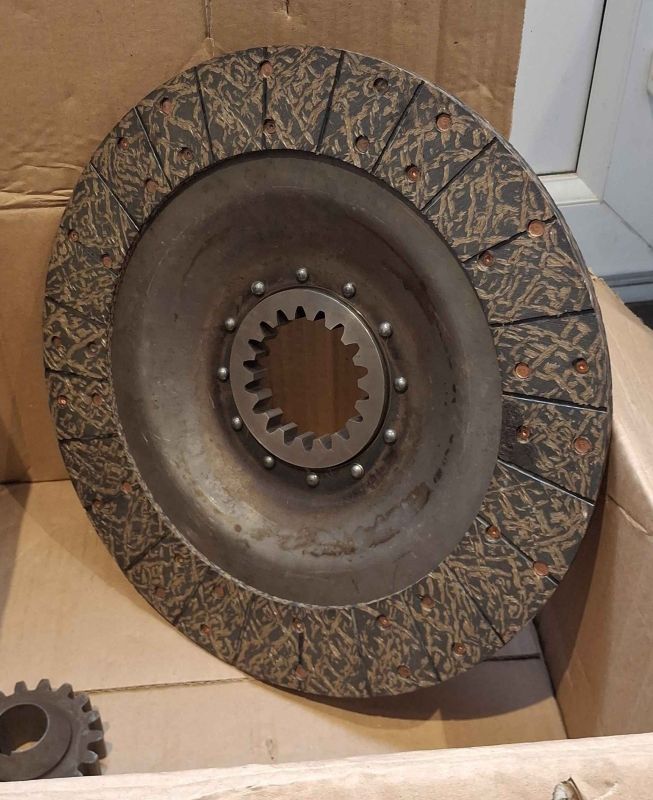
Work to rectify all of this has slowly been taking place. Many parts have already been cleaned and de-rusted. A replacement clutch shaft and clutch plate have been acquired to replace the damaged ones. New pilot and release bearings have been acquired and have been fitted, whilst the missing spacer piece is currently being made.
In February 2025 the bottom half of the engine was disassembled, and it was found to be much worse than the top end. Almost every split pin was missing, or had been replaced with bent roofing nails. It was also discovered that the crank had about 1mm of play up and down when moving it by hand.
Upon further investigation it was discovered that the main crank bearings were held in by nylocks, which were not done up correctly. The nylon in the nylocks hadn’t coped well with the hot oil within the engine and had deteriorated very badly, likely allowing the nuts to unwind in service. Nylocks are not correct for these engines, a clear sign these have been replaced at some point.
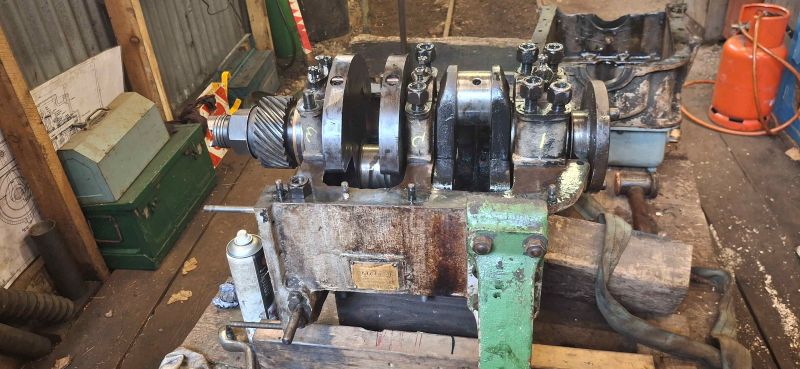
Another big problem that was discovered was the use of mismatched bearings on the crank. During disassembly it was discovered that the block side bearings were whitemetal, and the bearing strap side were leaded copper. These bearings should be of the same material both sides. Its likely a combination of mismatched bearings and loose bearing straps that have contributed to the amount of damage found on Bluey’s crankshaft.
Once the crankshaft was removed from the engine it was measured for wear and ovality. It has been discovered to be worn oval quite badly, this along with the scoring present on the main journals will require it to be sent off for a regrind and undersized bearings to be fitted. Luckily a set of undersized main and big end bearings have been acquired.
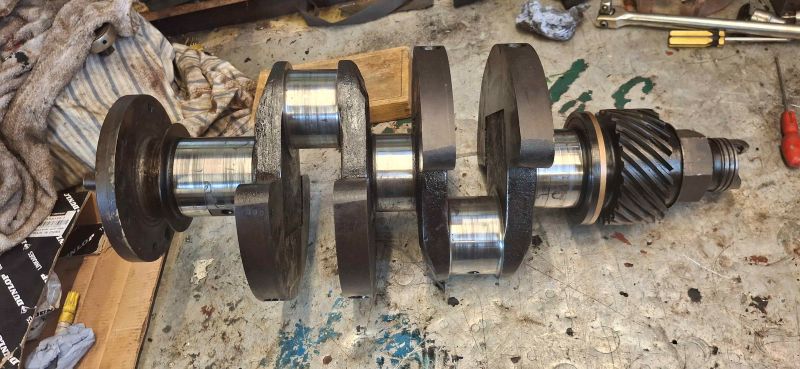
Whilst this update has been mostly bad news due to the state of the engine, it is all recoverable. The crankshaft was sent away in early March to be reground at a local engineering firm. Whilst the crankshaft is away for regrinding, work is being undertaken to rectify all the other problems discovered in the teardown, as well as stripping and repainting the engine.
It is currently hoped that Bluey will run again this year, with the goal being September for the 40th anniversary of the first time it was based at the OKLR in 1985.
8981
Upon removal of the flywheel cover, we were greeted by the sight of large shards of bronze in the housing and a lot of the bronze smeared into the clutch lining.
This was traced to the pilot bearing bush inside the flywheel, which had been replaced years previously, the current theory currently is that the nut on the end of the clutch shaft may have been digging into the bush and causing the unwanted drive.
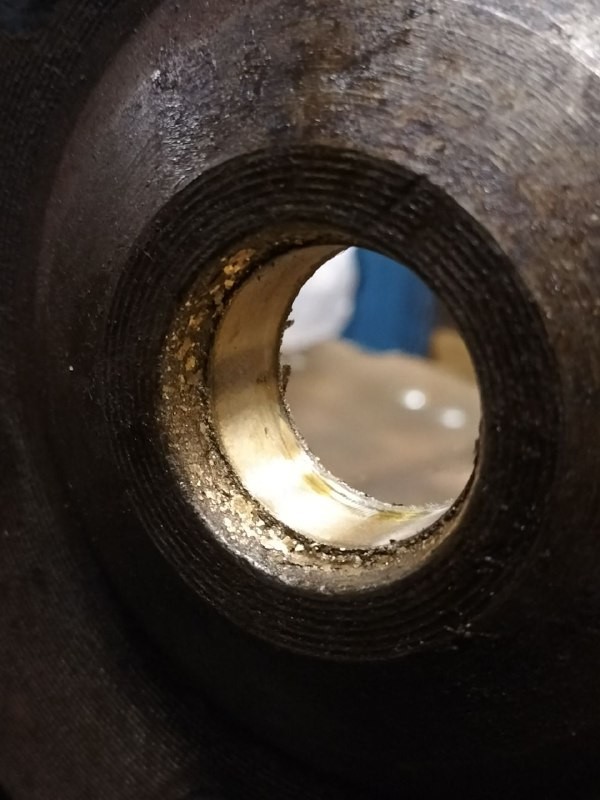
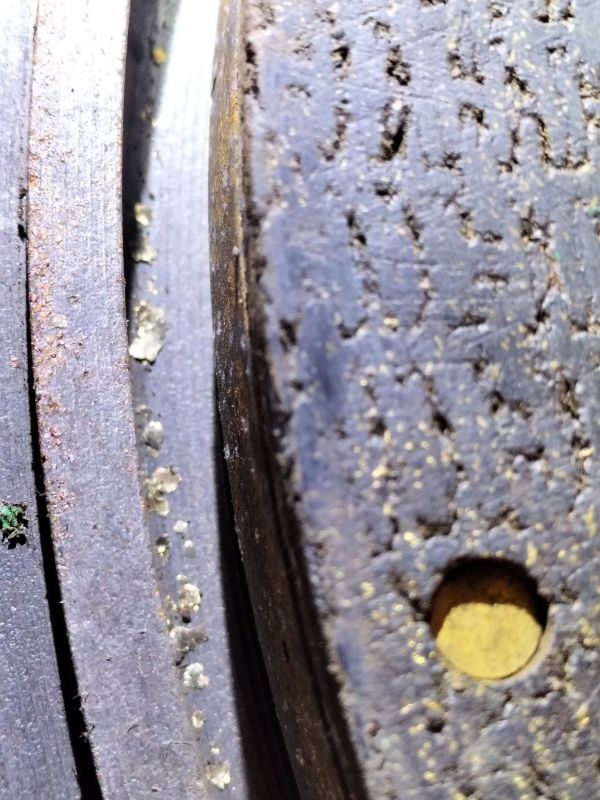
The flywheel was removed and the damaged bush pressed out, with a roller bearing fitted in its place, which is apparently a practised “upgrade” for the Motor Rails.
With the flywheel refitted, the clutch friction disc was sent away to a local firm to be relined and the cracked engine mount was sent to have a specialist repair, this is now at a local engineering firm having a bush fitted for the oil return screw to seal better.
Once this part is returned and fitted, the engine will be lifted back into the frames to be lined up with the gearbox, then when the clutch is reassembled and fitted, the engine will be built back up and a test run performed.
While we were waiting for parts to return, we progressed with other jobs, the axle sprockets were removed, keyways cleaned up and refitted in better alignment with the gearbox sprocket.
New roller chains were sourced and cut to length, with the chain adjusters needing some gentle heating to free off, the axles were moved in to allow enough flex in the chain to fit the connecting pieces.
These will now need careful tensioning to ensure that the wheelbase remains square after the adjustments.
The clutch pedal lever was also swapped for one with the correct stop, this should help prevent over travelling.
During these works we were kindly provided with a copy of Motor Rail drawings, made for 8981 as it was built to its special arrangement.
These very helpfully show the calculations that were performed for the throw of the levers and the placements of various pivots, many thanks must go to John Rowlands for providing this invaluable information which will greatly aid in 8981’s eventual return to its uniquely Midhurst spec.